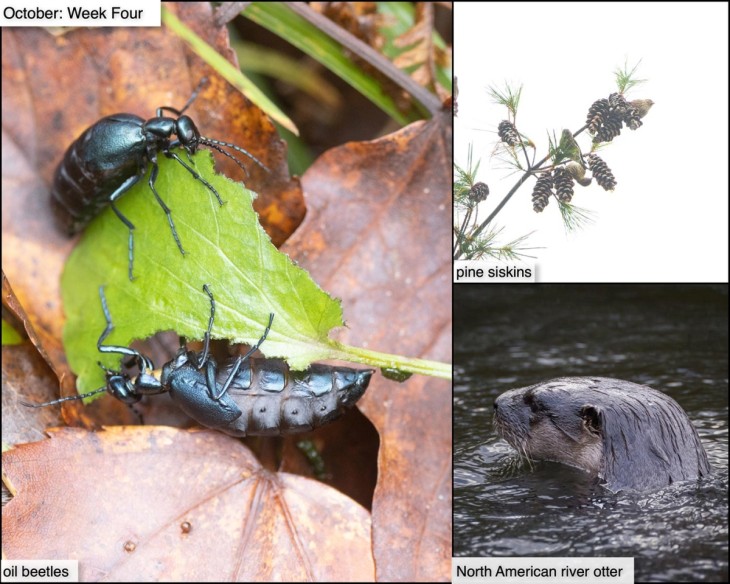This week in the woods, we stumbled into a group of about ten oil beetles (Meleo genus) that had probably come together to mate. These iridescent beetles with undersized, ant-like heads, live up to their creepy looks. As noted in this essay from our Outside Story archives, blister beetles produce a toxin, cantharidin, which seeps out of the leg joints when the insects are threatened, and can deliver a painful blister. This substance is also highly poisonous to vertebrates.
Another fascinating-and-disturbing fact about oil beetles is their relationship with solitary bees. In at least some species of oil beetles, the larvae swarm together to produce pheromones that attract bees, then hitch a ride on a bee to its nest, where they devour bee’s larvae – as described in this Invertebrate Bestiary column from the Summer 2022 issue of Northern Woodlands. (As shown in this photo, however, adult beetles prefer salad.)
This is a good cone year, which means a higher likelihood of visits from seed eating Canadian bred birds, including pine siskins. These finches, distinguished by striped bodies and wings, have shown up en masse in our area, and you can hear them chittering away on the tops of pines. They’re fun to watch – they seem perfectly happy to feed upside down, and they stick close to each other among the cones.
We recently discovered that a family of otters has returned to the same river site where a family was last autumn, perhaps attracted by some seasonal underwater food source. This photo by Tig Tillinghast shows how well the animals’ hair is adapted to an aquatic life. The outer guard hairs repel water, keeping the underfur dry and well insulated. As for those long whiskers, they’re useful for helping to detect prey in the murk of a river bottom.
What have you noticed in the woods this week? Submit a recent photo for possible inclusion in our monthly online Reader Photo Gallery.


